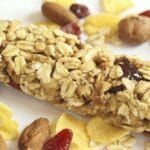Now Reading: Cold Plunge Temperature Guide: Achieve Better Health, Mood, And Recovery
-
01
Cold Plunge Temperature Guide: Achieve Better Health, Mood, And Recovery

Cold Plunge Temperature Guide: Achieve Better Health, Mood, And Recovery
Cold plunges are becoming more popular to improve health and recovery. To get the most out of them, it is essential to pick the right temperature. The best temperature range is between 50 and 60°F or 10 to 15°C. Knowing how the body reacts to different temperatures can help you choose the best temperature for your needs.
Cold Plunge Temperatures 61°f To 75°f (Comfortable Cold)
Increased Metabolic Health
Temperatures in the cold plunge range from 61°F to 75°F are suitable for your metabolism. The body’s thermogenesis speeds up around 68°F, burning more calories to make heat. This helps you control your weight and keeps your metabolism healthy. Keeping your cold plunge temperatures in this range can help you raise your metabolic rate in a healthy way.
Enhanced Mood And Motivation
57°F cold plunges are suitable for your mood and motivation. Noradrenaline levels rise by 530%, and dopamine levels increase by 250% when you dive into this cold water. These chemicals improve your mood, drive, and mental health in general. Being around this temperature regularly can help lower stress and make you more mentally clear and alert.
Improved Melatonin Production
Melatonin production goes up when the temperature drops below 59°F. This is important for controlling sleep. This freezing plunge temperature makes it easier to sleep. At this temperature, melatonin levels are at their best, which makes sleep better. Exposure to cold plunge temperatures in this range is good for your health and can help you sleep better.
Cold Plunge Temperatures 46°f To 60°f (Adaptive Cold)
Further Increase In Metabolic Rate
The metabolic rate dramatically increases when temperatures drop below 46°F and above 60°F. Your metabolism can speed up by up to 350% if you get into water that is about 57°F. This cold plunge temperature activates the body’s sympathetic nervous system, increasing energy expenditure and supporting healthy metabolism and efficient calorie burn.
Faster Muscle Recovery
Cold plunge temperatures between 50°F and 60°F help muscles recover faster. This range lowers signs of muscle damage and pain. Studies have shown that cold plunges in this temperature range can reduce levels of serum lactate dehydrogenase and creatine kinase. This can help muscles recover faster and perform better after strenuous workouts.
Increased Circulation
Cold plunges between 50°F and 60°F help the blood flow. Vasoconstriction and vasodilation happen because of the cold, which improves blood flow. This process eliminates metabolic waste and gives muscles the nutrients they need. Choosing cold plunge temperatures in this range is good for your health and speeds up recovery by making blood flow better and getting more nutrients to your body.
Cold Plunge Temperatures 32°f To 45°f (Extreme Cold)
Improved Insulin Sensitivity
Temperatures in the cold plunge between 32°F and 45°F make insulin work better by turning on brown adipose tissue. Immersion at about 39°F increases the use of glucose and fat. This cold plunge temperature helps the body lose fat and keep its metabolism healthy. Maintaining insulin sensitivity in this range under control helps protect against obesity and heart disease.
Enhanced Testosterone Levels
Taking a cold plunge between 34°F and 48°F can raise testosterone levels. Red blood cells and hemoglobin levels rise when people are exposed to these frigid plunge temperatures. Increasing the body’s ability to carry oxygen indirectly raises testosterone production. Regular cold plunges in this range improve endurance and help keep hormones healthy.
Support For The Lymphatic System
The lymphatic system works better when the plunge is between 32°F and 45°F. Being submerged in water at these temperatures increases lymph flow, which helps eliminate waste and toxins. Temperatures in this range for cold plunges help the lymphatic system drain and support detoxification. When the temperatures are correct, the lymphatic system works well, which is good for your overall health and wellness.
Read Also: What is Trulicity: Uses, Side Effects, and Precautions
Factors To Consider When Choosing A Temperature
Individual Cold Tolerance
When choosing a cold plunge temperature, consider how much you can handle. Get used to the colder weather slowly. Watch how your body reacts to ensure a safe and effective cold plunge experience that fits your level of comfort.
Health Considerations
Before choosing a cold plunge temperature, consider any health problems you already have. Talk to a doctor about the possible risks and reasons why you shouldn’t do it, especially if you have heart problems or other health issues that could be affected by being in cold water.
Desired Benefits
Pick a cold plunge temperature based on the health benefits you want. More freezing temperatures may help reduce muscle swelling and pain, while warmer temperatures may be better for beginners. Ensure the temperature is right for your health goals for the best results.
Balancing Comfort And Challenge
When choosing a cold plunge temperature, balance ease of use and difficulty. As you get used to the new temperature, slowly lower it so you can keep getting the benefits while keeping your level of discomfort manageable. In cold water therapy, this method helps people adapt and bounce back.
Conclusion
Picking the right cold plunge temperature is crucial for getting the most out of it. Each temperature range has its benefits, from better mood and recovery to better metabolic health. The cold plunge, anywhere from 61°F to 75°F, is suitable for your metabolism and mood. Temperatures between 46°F and 60°F are great for speeding up the metabolism and making muscles recover faster.
Extremely cold plunges between 32°F and 45°F are good for insulin sensitivity, testosterone levels, and lymphatic system health. When choosing a cold plunge temperature, consider how well you can handle the cold and your health goals. Comfort and challenge must be balanced for cold water therapy to work and be safe.





















